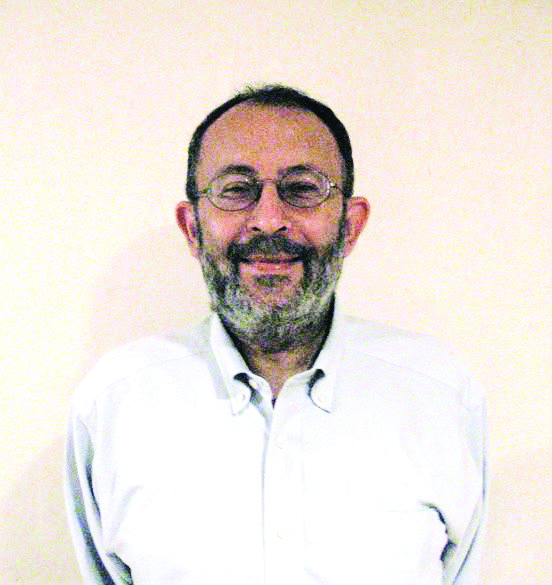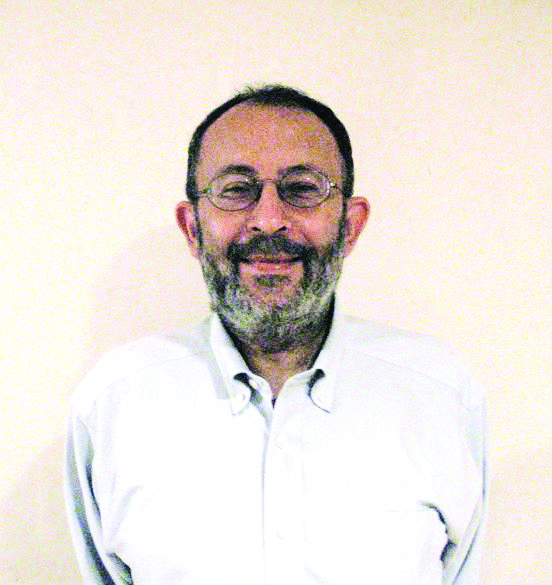 Nowhere in Tanakh is anyone counting from creation, and even after the period of the Tanakh, there is no evidence for use of our Jewish count from creation in the several centuries that followed. What is the origin of this count?
Nowhere in Tanakh is anyone counting from creation, and even after the period of the Tanakh, there is no evidence for use of our Jewish count from creation in the several centuries that followed. What is the origin of this count?
As further background, if one looks at how Jews dated events in the Amoraic and Geonic periods, we see a contrast between the Jewish community of Palestine and that of Babylonia. In Amoraic and Geonic Palestine, Jews counted mainly from the second churban (i.e., 69 or 70 C.E. was year 1.) How do we know this? A main source are the many Jewish tombstones from the town of Zoar (south of the Dead Sea). For example, one reads: “May the soul rest of Shaul…who died on the first of the month of Marcheshvan of the first year of the shemitah, the year 364 after the churban beit ha-mikdash.” There are many more tombstones from this site, mostly from the fourth and fifth centuries C.E., and all use a date on the churban beit ha-mikdash count. Another example of a churban beit ha-mikdash count in Palestine is an inscription found at a synagogue in the Galilee: “built 494 years after the churban beit ha-mikdash.”
In contrast, in Amoraic and Geonic Babylonia, the main dating system used by the Jews was minyan shetarot (literally: the era of contracts). This was a counting system used in much of the secular world at the time; its name in the secular world was “the Seleucid Era.” Its year one was 312 B.C.E. due to a military victory by Seleucus I in that year. (In some regions, 311 B.C.E. was year one on this system.)
We do have evidence from the Talmud that there was knowledge of the Jewish year from creation in the Amoraic period in both Palestine and Babylonia, but it seems not to have been a frequently used method of dating in either region. (The Talmud also refers to one source from the late Tannaitic period that reflects use of the date from creation.)
How did the Jews in the late Tannaitic and Amoraic periods get their knowledge of what year it was from creation? The starting point is the work Seder Olam, put into final form by R. Yose b. Halafta in the second century C.E. Although this work does not give the total of the years from creation, it gives the length of time for each of the individual periods mentioned in Tanach, and it gives the length of the Second Temple period. From the data conveniently collected in this work, a Jew could easily calculate the date from creation. Seder Olam starts, for example, with the following passage: “From Adam to Noach, 1656 years.” Here, the work has conveniently added up all the years listed at the beginning of Genesis.
Although the lengths of all the different periods from Adam to the second churban are listed in Seder Olam, it seems that R. Yose did not intend that people total them up and start using a count from creation based on his work. In fact, the conclusion of the work instructs people in Palestine to date from the second churban. It also remarks that people in the golah (Babylonia) date on the minyan shetarot system.
But over time, the count from creation, based on the data in Seder Olam, came to be used more and more. Eventually, in the period of the Rishonim, it became the main count used by most Jewish communities. We do not have enough sources to understand why this took place and why the other two counts fell out of favor. (Interesting is a passage in the Rambam, writing in Egypt in the late 12th century, where he uses all three systems. See his Hilkhot Shemitah ve-Yovel 10:4.)
One other early source that deserves mention are tombstone inscriptions from a Jewish community in Italy from the ninth century. (In general, the Jewish customs in Italy followed the customs of Palestine.) Here, all 23 surviving tombstone inscriptions bear a date from the second churban but three bear an additional date on the count from creation. These inscriptions show that the date from the second churban was still the dominant chronology in the ninth century C.E. in the areas under the influence of Palestine, but the count from creation was slowly making some headway.
It is unfortunate that, out of the three possible schemes, it was the count-from-creation scheme that became the mostly widely used one; it is the most problematic of the three. With regard to the other two, there is no dispute how long it is today from the second churban, and no dispute how long it is today from the beginning of the Seleucid era. (I am ignoring trivial issues of one to two years.) The count-from-creation scheme, on the other hand, has difficulties with it.
I am here only going to discuss the major difficulty with it. (In 1997, I authored a book on this topic: Jewish History in Conflict: A Study of the Major Discrepancy Between Rabbinic and Conventional Chronology.) When R. Yose in the second century C.E. had to figure out the length of the Second Temple period, where did he get his data? The Tanakh gives the data for the Biblical period, but the Biblical period only spans up to the mid-fifth century B.C.E. It stops in the middle of the Persian period. To get the length of the entire Second Temple period, R. Yose had to rely on a prediction in the ninth chapter of Daniel, which refers to a future 490-year period, the endpoints of which are ambiguous. R. Yose interpreted this prediction as referring to a 70-year exilic period and a 420-year Second Temple period. He accordingly assigned 420 years to the Second Temple period. In truth however, the Second Temple period spanned 589 years, from 520 B.C.E (second year of Darius) until 70 C.E. (There is no year zero.) This means that our count from creation lacks 169 years if we focus solely on the Second Temple period. (On the other hand, R. Yose assigns 410 years to the First Temple period. This is about 29 years too big. The First Temple period spanned 967–586 B.C.E.) A 16th-century Italian Jewish scholar named Azariah de Rossi wrote much about the error in the count from creation due to the 420 versus 589 year problem, causing much turmoil.
Fortunately, in some contexts we use the phrase le-minyan she’anu monin kahn, which would seem to cover ourselves for errors (i.e., we are not claiming necessarily that our count is accurate, only that we are giving this specific date according to the way we count).
I mentioned earlier that in the Amoraic and Geonic periods in Palestine, the surviving sources mainly reflect a count from the second churban. There is one notable exception. A synagogue mosaic in the town of Susiya, in southern Judea, uses the count from creation. Unfortunately, the precise year inscribed has not survived. The synagogue was in use from the fourth through eighth centuries. But a paleography expert has estimated the date of this particular mosaic inscription to be the sixth or seventh century.
For those interested, the system of counting that counts the present year as 2016 was invented by a Christian monk named Dionysius Exiguus in the year 525 C.E. He did not like the system in use in his time, which was pegged to Roman emperors who were notorious for persecuting Christians. Accordingly, he invented a system where year 1 was some event connected with Jesus.
(Since the Jewish count from creation is significantly incorrect and the 2016 count has a Christian origin, perhaps we should consider going back to dating from the second churban!)
Mitchell First is an attorney and Jewish history scholar. His recently published book, Esther Unmasked: Solving Eleven Mysteries of the Jewish Holidays and Liturgy (Kodesh Press, 2015), is available at the Judaica House in Teaneck and at amazon.com. He can be reached at MFirstAtty@aol.com.
By Mitchell First
For more articles by Mitchell First, and information on his books, please visit his website at rootsandrituals.org.








